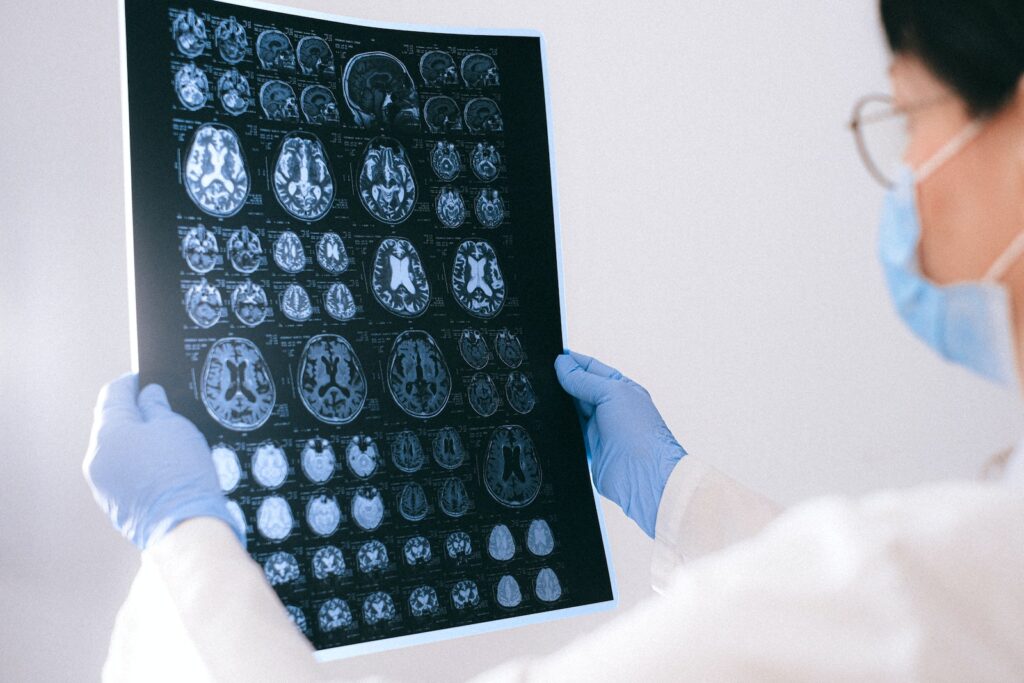Table of Contents
Introduction to Neurology Innovations
The field of neurology has advanced significantly in recent years, leading to unprecedented innovations that are changing the lives of patients with neurological disorders. These advances have been made possible by breakthroughs in neuroscience research and cutting-edge technologies like brain imaging and precision medicine.
Neurological disorders affect millions of people worldwide, causing a wide range of symptoms such as seizures, memory loss, tremors, and paralysis. While some conditions can be managed with medications or surgery, others have proven difficult to treat using traditional methods.
However, recent advancements in neurology are providing hope for patients who suffer from these debilitating conditions. Innovative therapies and approaches are being developed every day that could potentially revolutionize how we diagnose and treat neurological disorders.
The use of non-invasive brain imaging techniques such as magnetic resonance imaging (MRI) or positron emission tomography (PET) has also allowed researchers to better understand brain function. By mapping the neural networks responsible for specific behaviors or cognitive functions within the brain through these modalities more accurately than ever before.
Advances in Brain Imaging Techniques
Magnetic resonance imaging (MRI) is one such innovation that has had a significant impact on understanding neurological disorders. MRI uses powerful magnets and radio waves to produce detailed images of the brain’s soft tissues, allowing doctors to identify structural abnormalities or damage caused by injury or disease.
Positron emission tomography (PET) scans are another advanced technique used in neurology research and treatment. They enable physicians to map metabolic activity in the brain, which can help diagnose cognitive disorders such as Alzheimer’s disease at an earlier stage than previously possible.
Magnetoencephalography (MEG) is yet another technology being utilized for mapping neural activity within specific regions of the brain with exceptional precision. It records magnetic fields generated by neurons during sensory processing tasks with remarkable temporal resolution,
The emergence of functional magnetic resonance imaging (fMRI) has also facilitated many groundbreaking discoveries about how different areas of our brains communicate internally and externally when we perform various tasks or experience sensations – all without invasive procedures.
Transcranial Magnetic Stimulation (TMS), meanwhile, delivers controlled magnetic pulses into specific regions of patients’ brains to modulate neural activity associated with therapeutic effects that range from alleviating depression symptoms through treating chronic pain conditions including migraines
In conclusion:
Advances in Imaging Techniques have enabled Neurologists & Researchers alike better understand functions related specifically towards varying areas within our complex nervous systems.
Emerging Therapies for Neurological Disorders
Neurological disorders can be debilitating and negatively impact the quality of life for millions of people around the world. Traditional treatment methods such as medication or invasive surgeries may not always provide desired results in these cases. However, emerging therapies offer new hope to patients with neurological diseases.
One such therapy is stem cell transplantation, which involves transplanting healthy cells into a patient’s damaged area of the brain or spinal cord to encourage neural regeneration. The potential use of stem cells in neurological disease treatments is an exciting prospect that has shown promising results in early clinical trials.
Another innovative approach is gene therapy. Scientists have identified specific genes linked to various neurological disorders and are using this knowledge to develop gene-based therapeutics aimed at correcting genetic defects underlying these conditions. This method holds immense potential for treating inherited genetic diseases such as Huntington’s disease and ALS.
The field of neuromodulation represents another significant development in neurology treatments. It involves modifying nerve activity through electrical stimulation by implanting devices like deep brain stimulators or vagus nerve stimulators that target certain areas within the nervous system affecting specific symptoms related to Parkinson’s, epilepsy, depression or chronic pain.
Monoamine oxidase inhibitors (MAOIs) are being investigated as a new therapeutic option for multiple sclerosis (MS). MAOIs regulate neurotransmitters known as monoamines like serotonin and dopamine which play crucial roles throughout our bodies including mood regulation & mobility control. In animal studies on MS models showed that treating with MAOI reduced inflammation levels resulting in less damage done into neurons.
In conclusion, emerging therapies represent groundbreaking opportunities for helping individuals struggling with various neurodegenerative disorders regain their independence and live better lives overall.
Neuromodulation Technologies and their impact on Treatment
Neuromodulation technologies have revolutionized the treatment of neurological disorders. These therapies use electrical or magnetic stimulation to regulate dysfunctional neural circuits and improve overall brain function. Neuromodulation can target several areas of the nervous system, including the spinal cord, peripheral nerves, and deep brain structures.
One of the most common neuromodulation techniques is Transcranial Magnetic Stimulation (TMS), which uses a magnetic field to stimulate nerve cells in specific regions of the brain. TMS has been particularly effective in treating depression and anxiety disorders where other traditional treatments have failed.
Another popular technique is Deep Brain Stimulation (DBS) that involves implanting electrodes into specific parts of the brain to modulate abnormal neuronal activity related to movement disorders such as Parkinson’s Disease or Dystonia. DBS has shown promising outcomes in reducing symptoms, and improving quality of life for patients with these conditions.
Vagus Nerve Stimulation (VNS) is another innovative method used for epilepsy management by delivering electrical impulses on Vagus Nerve trunk- one key structure involved in seizures generation process resulting from irregular firing pattern between neurons from different regions within epileptic foci.
TENS technology involves applying low-frequency electric current through skin surface sites near painful area – usually back muscles responsible for chronic pain development due poor posture habits during long hours sitting at work – hence providing relief without need drugs ingestion or invasive procedures under general anaesthesia like spine surgery option available only when all conservative methods fail others wise better be avoided because they create dependencies over time being irreversible some times provoking additional damage elsewhere along spine column leading disability/mobility impairments increasingly requiring more complex interventions as well longer recovery periods followed severe postoperative complications sometimes fatal if unnoticed until late stages occurring after discharge from hospital/ rehabilitation center/others care facilities also due negligence medical staff/system failures lack knowledge/experience in technique application or poor patient compliance with instructions issued pre/post intervention period
Neuromodulation technologies have an immense potential to help patients managing chronic neurological conditions that severely impact their daily life. The future holds even more promise as researchers explore new applications for these tools and discover new ways of using them.
Precision Medicine Approaches in Neurology
Precision medicine is an emerging approach to healthcare that involves tailoring treatment to the individual. In neurology, precision medicine has shown tremendous potential for improving outcomes and quality of life for patients.
One example of a precision approach in neurology is genetic testing. With advancements in genomic sequencing technology, it is becoming easier and more cost-effective to sequence a patient’s DNA and identify genetic mutations that may be contributing to their condition. This information can then be used to develop targeted therapies or personalized treatment plans.
In addition, precision imaging techniques are being developed that allow doctors to visualize brain structures at a sub-millimeter scale. These techniques could help with the early detection and diagnosis of neurological conditions, as well as assist with surgical planning and monitoring treatment progress.
The use of mobile health technologies also falls under the umbrella of precision medicine in neurology. Wearable devices such as smartwatches or fitness trackers can monitor physiological data like heart rate variability or sleep patterns, which may provide insights into neurological function. Mobile apps are also being developed specifically for managing symptoms related to conditions like Parkinson’s disease or multiple sclerosis.
Finally, advances in artificial intelligence (AI) are also playing a role in precision approaches to neurology. AI algorithms can analyze large datasets from medical records or imaging studies to help predict disease progression or identify new biomarkers for diagnosis.
All these approaches point towards exciting possibilities when it comes to treating complex neurological disorders with greater accuracy than ever before leading us towards improved treatments patient management strategies
.
Future of Neuroscience Research and Innovations
The field of neuroscience is rapidly evolving. Scientists are constantly uncovering new insights into the brain’s mechanisms, leading to innovative approaches to treat neurological disorders. As technology advances, we can expect even greater progress in the future.
One area where neuroscience research is likely to make significant strides in the coming years is neuroprosthetics. These devices use advanced sensors and algorithms to decode brain signals and translate them into movements for prosthetic limbs or other devices. With further research, it may be possible for people with paralysis or amputations to regain some degree of mobility.
Another promising area of research involves artificial intelligence (AI) and machine learning techniques that can analyze large amounts of data from brain scans or other sources. This could lead to more accurate diagnoses, personalized treatment plans, and an improved understanding of brain functions such as memory formation or decision-making processes.
In addition, stem cell therapies represent another avenue for advancing treatment options for neurological disorders. Stem cells have unique properties that enable them to transform into various types of cells throughout the body including those found in the nervous system. Scientists hope that by using stem cell therapies they will be able repair damaged neurons caused by injury or disease like Parkinson’s disease which lacks a cure till date.
Finally yet importantly, ethical considerations surrounding emerging technologies must also be taken into account while developing novel treatments; this includes issues around privacy rights as well as potential unintended side-effects on patients receiving these treatments.
In conclusion, there are exciting developments underway across multiple fronts in neuroscience research today–from neuroprosthetics to AI–driven analysis—and continued progress toward practical solutions seems inevitable.




